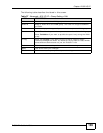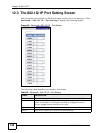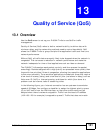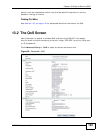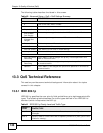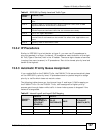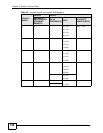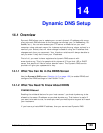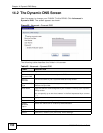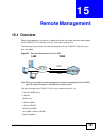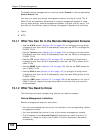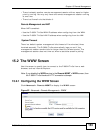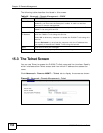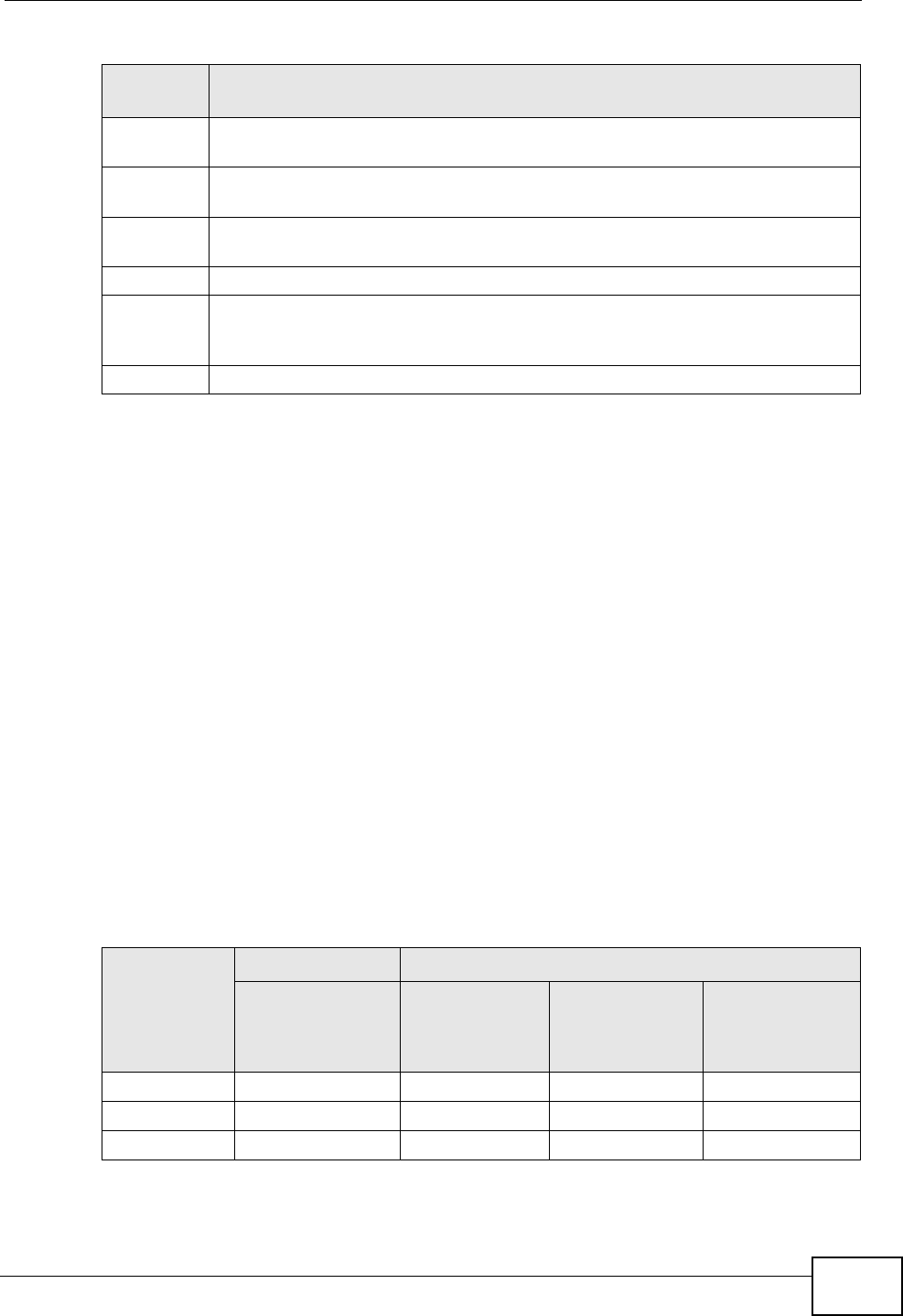
Chapter 13 Quality of Service (QoS)
P-660H-T1v3s User’s Guide
147
13.3.2 IP Precedence
Similar to IEEE 802.1p prioritization at layer-2, you can use IP precedence to
prioritize packets in a layer-3 network. IP precedence uses three bits of the eight-
bit ToS (Type of Service) field in the IP header. There are eight classes of services
(ranging from zero to seven) in IP precedence. Zero is the lowest priority level and
seven is the highest.
13.3.3 Automatic Priority Queue Assignment
If you enable QoS on the P-660H-T1v3s, the P-660H-T1v3s can automatically base
on the IEEE 802.1p priority level, IP precedence and/or packet length to assign
priority to traffic which does not match a class.
The following table shows you the internal layer-2 and layer-3 QoS mapping on
the P-660H-T1v3s. On the P-660H-T1v3s, traffic assigned to higher priority
queues gets through faster while traffic in lower index queues is dropped if the
network is congested.
Level 5 Typically used for video that consumes high bandwidth and is sensitive to
jitter.
Level 4 Typically used for controlled load, latency-sensitive traffic such as SNA
(Systems Network Architecture) transactions.
Level 3 Typically used for “excellent effort” or better than best effort and would
include important business traffic that can tolerate some delay.
Level 2 This is for “spare bandwidth”.
Level 1 This is typically used for non-critical “background” traffic such as bulk
transfers that are allowed but that should not affect other applications and
users.
Level 0 Typically used for best-effort traffic.
Table 41 IEEE 802.1p Priority Level and Traffic Type
PRIORITY
LEVEL
TRAFFIC TYPE
Table 42 Internal Layer2 and Layer3 QoS Mapping
PRIORITY
QUEUE
LAYER 2 LAYER 3
IEEE 802.1P
USER PRIORITY
(ETHERNET
PRIORITY)
TOS (IP
PRECEDENCE)
DSCP
IP PACKET
LENGTH (BYTE)
0 1 0 000000
12
2 0 0 000000 >1100



